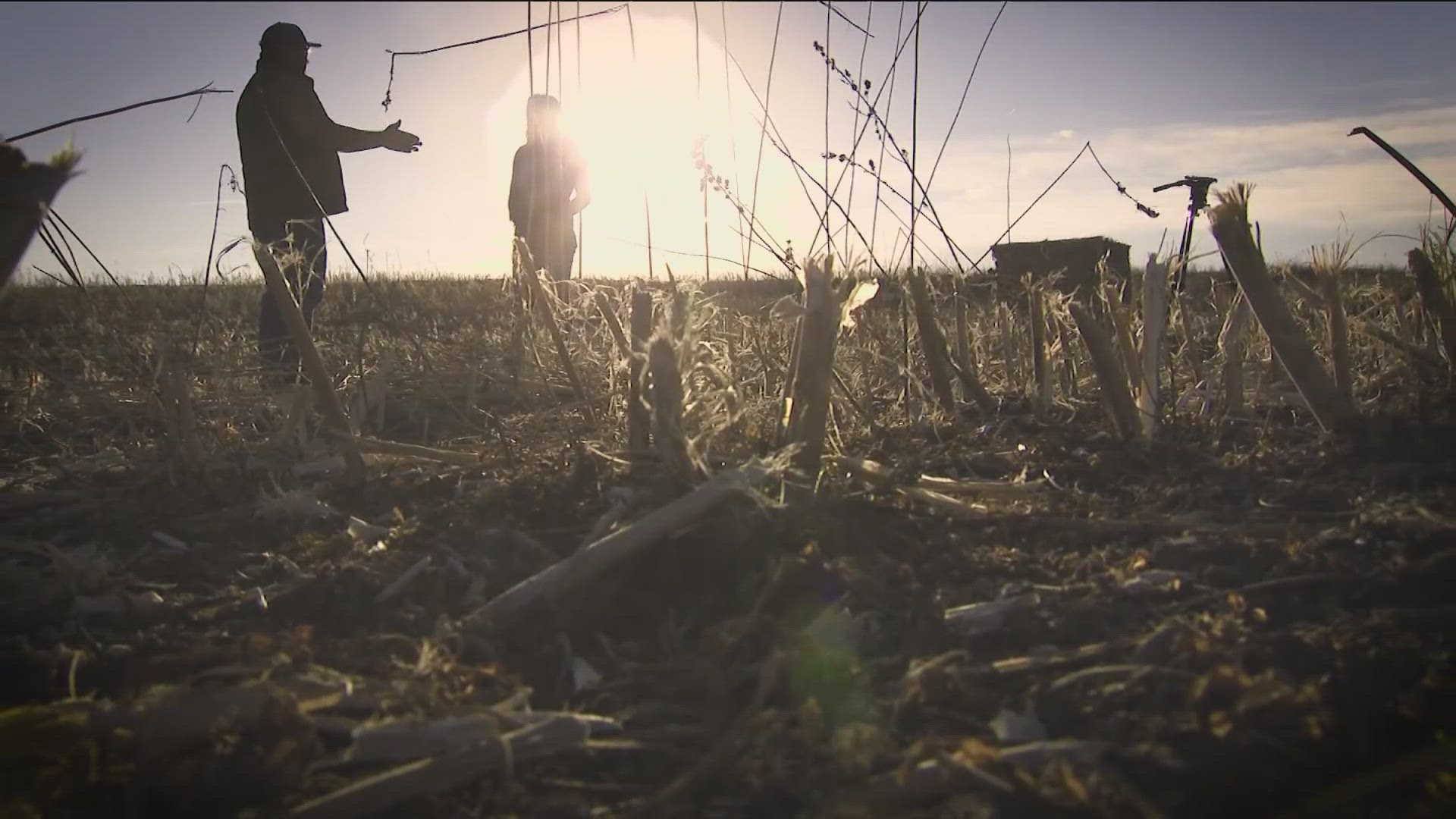BOISE, Idaho — The last state to legalize industrial hemp – with some of the strictest regulations – is also anticipated by agronomists to become a leading hub for cultivating and supplying the crop nationwide.
Idaho legalized hemp in April 2021, showing a lot of promise for the state economy. However, farmers explain certain restrictions are holding the state back.
"Everyone's nervous that it's marijuana, or that it's weed, or it's a stepping stone to weed, but it's a stepping stone to industrial building," says hemp farmer and processer Triston Sponseller.
A new generation of farming.
"We'll rake it, bale it, stack it, tarp it. They just kind of spread out, they spread out like a tree," Sponseller said. "I was the largest grower in the state for 2022 and 2023, and this year I grew just a little bit less, but next year I'm hoping to get back on top."
Sponseller grows hemp in Roberts, Idaho.
"This isn't CBD, this isn't marijuana – this is fiber – that's what we're growing it for," Sponseller said.
At his farm, these stalks are what were missed during harvest.
"What's called a cola, and it's basically the seed head," Sponseller said.
This is where you will find hemp seeds – and the flower – that contains THC.
"I would understand the state's position if we were growing for CBD, like there's a little bit more concern in the THC," Sponseller said. "But none of this is going for human consumption. It's going for industrial manufacturing."
Sponseller said the demand for CBD has already been met, so people are now growing it for alternative resources.
This year, Sponseller grew these crops to harvest the seeds. However, he said the crop "tested hot – it tested .8" for THC.
In Idaho, the legal limit for hemp growers is .3.
Sponseller and four other farmers received a strike from the Idaho State Department of Agriculture (ISDA) and had to remove the top part, with the flower.
Those farmers had to front the cost, after buying what they thought was a certified seed.
"It was certified when it came from overseas, and it didn't go hot in Colorado," Sponseller said. "So, the other thing they can figure is that there was some marijuana somewhere close by in the cross that makes so much more sense because hemp pollinates."
If a hemp producer gets three strikes within five years, they are unable to produce hemp for another five years.
It can be costly to have inspectors come out, and also to get it all removed.
"I can't grow 2,000 acres of hemp and afford 20, 30 different tests for each field," Sponseller said.
It's not the ISDA's job to change the rules, the department just enforces them.
"We've encountered some varieties that seem to be a little bit problematic from the THC standpoint, and so they've struggled a little bit, but also learned from it, and they're coming full circle," said Casey Monn, ISDA Inspection Division Ag. Bureau Chief.
In turn, it means there are a lot of cautious farmers.
"Like me, I didn't do a whole lot, I just wanted to figure out how to do it," said Tim Cornie, co-owner of 1000 Springs Mill in Buhl.
After growing for two years on small 8-acre plots, Cornie didn't grow hemp this year, so he can learn more about what he can do with the crop.
The ISDA reports from 2022 to now, the acreage farmed has grown to four times its original size.
A slow growth, but one that Sponseller said would speed up, if restrictions were relaxed.
"Idaho has the highest restrictions in terms of remediation in probably most of the states in the US," Sponseller said. "So a little bit of relaxation there would go a long ways."
Sponseller said the plant has the chance to rewrite the story of agriculture in Idaho.
It's a rotational crop that requires very little water and helps the soil become more nutrient-dense.
"For being a plant grown in a field, it's impressive how strong it is; just its natural qualities," Sponseller said.
Strength perfect for the manufacturing process.
After harvesting the hemp, it gets loaded onto a truck for processing at Sponseller's plant in Rexburg.
"Here at the facility, our goal is to essentially separate the outer skin of the stalk – which is the skin – from the herd," Sponseller said. "This will go down to hempitecture and be made into insulation and potentially into some paper products or things like that. So, it's got a million different uses."
It can also be used for landscaping.
Sponseller said the hardest part is figuring out what market he wants to focus on.
"It's new and it's evolving, but it is moving forward," Sponseller said. "That's what I'm happy to say is we're seeing progress and it might be slow, but it is progressing."
This winter, Sponseller said he will work with other farmers to talk to legislators.
He hopes they can find common ground by easing up on some restrictions to farm this crop on a bigger scale.
Sponseller said that would bring more manufacturing jobs to Idaho.

